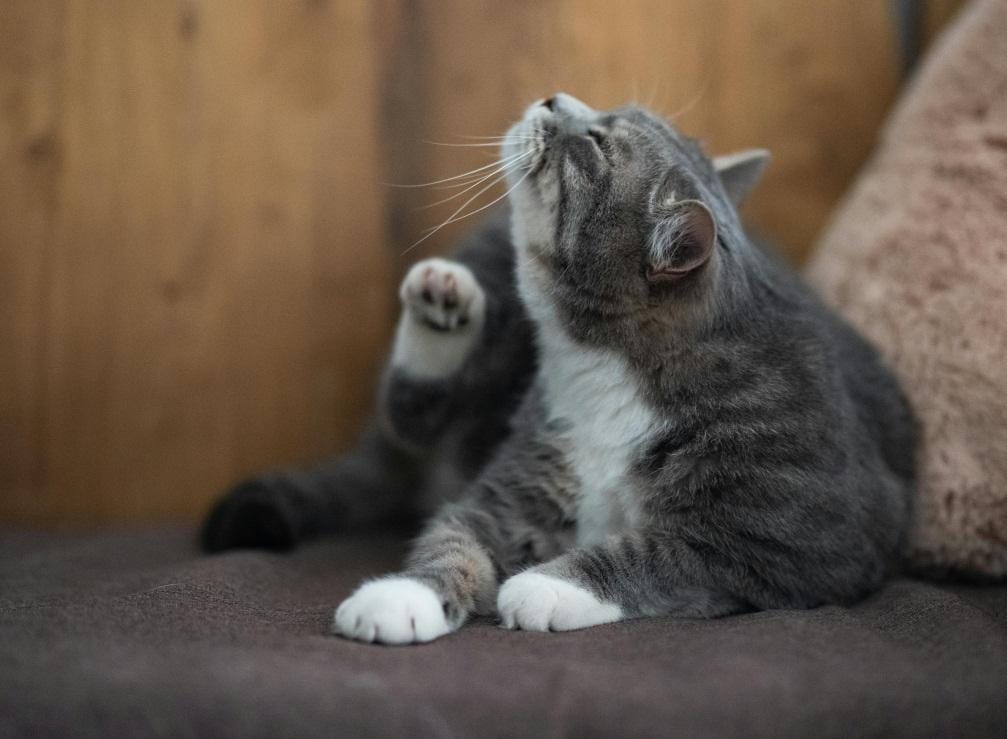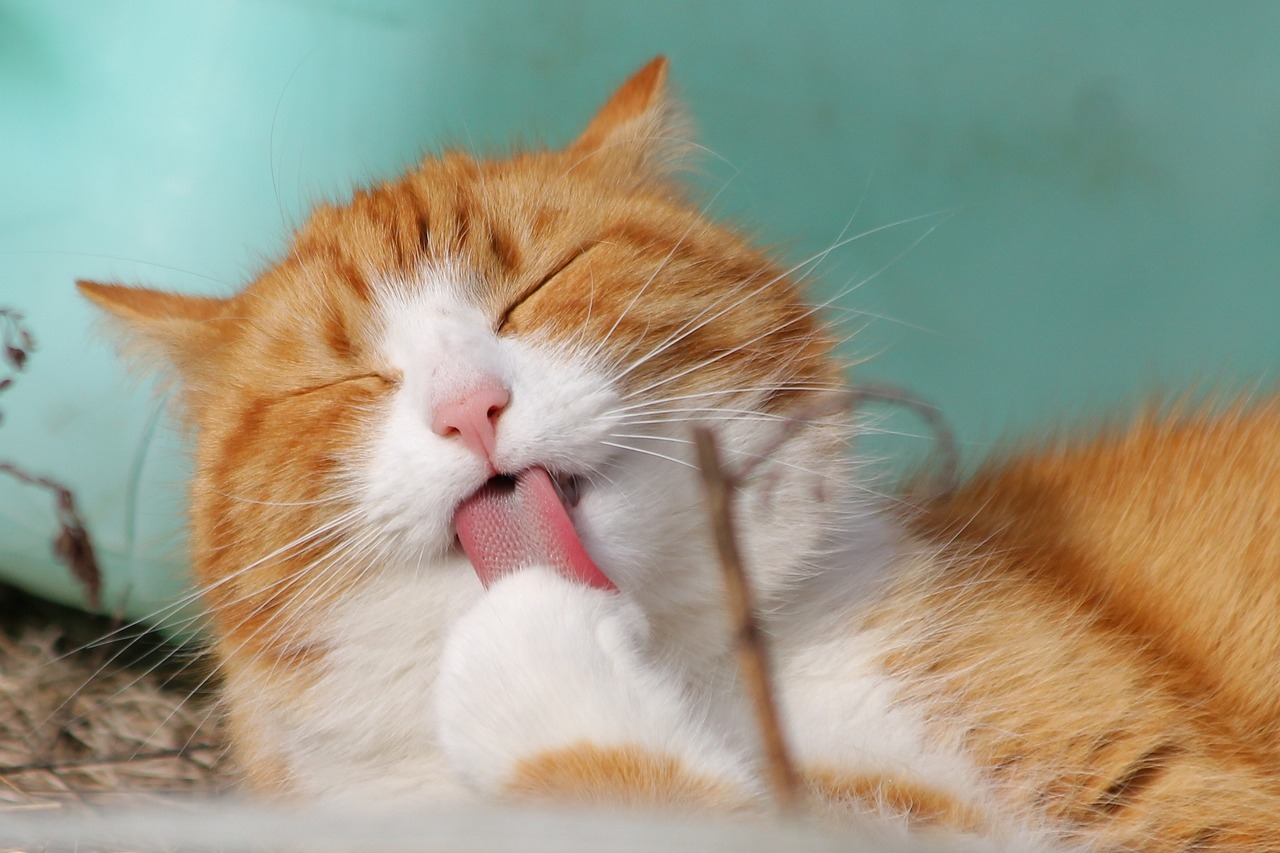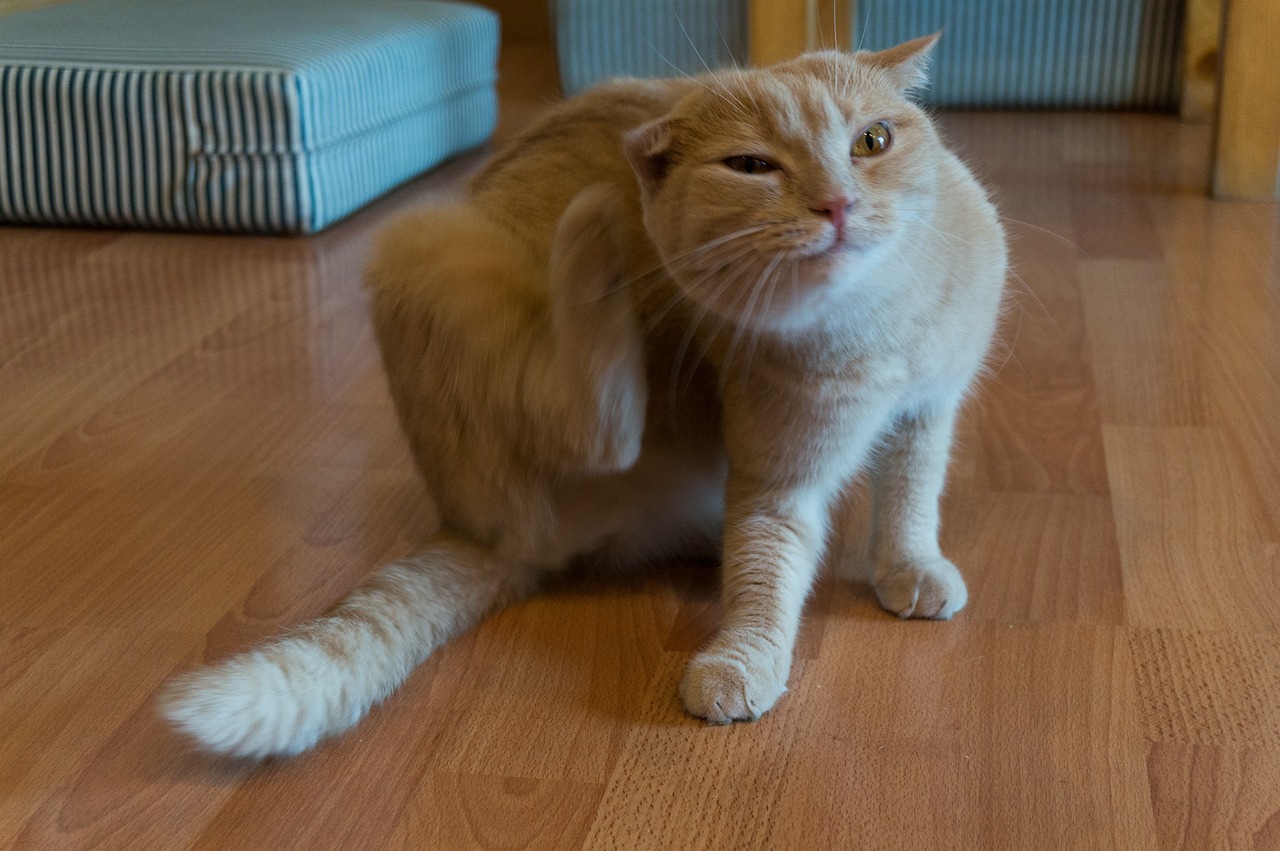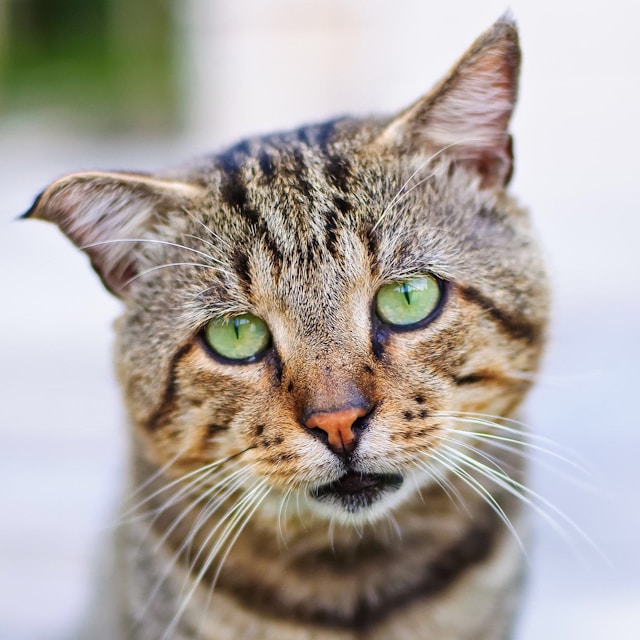European Shorthair
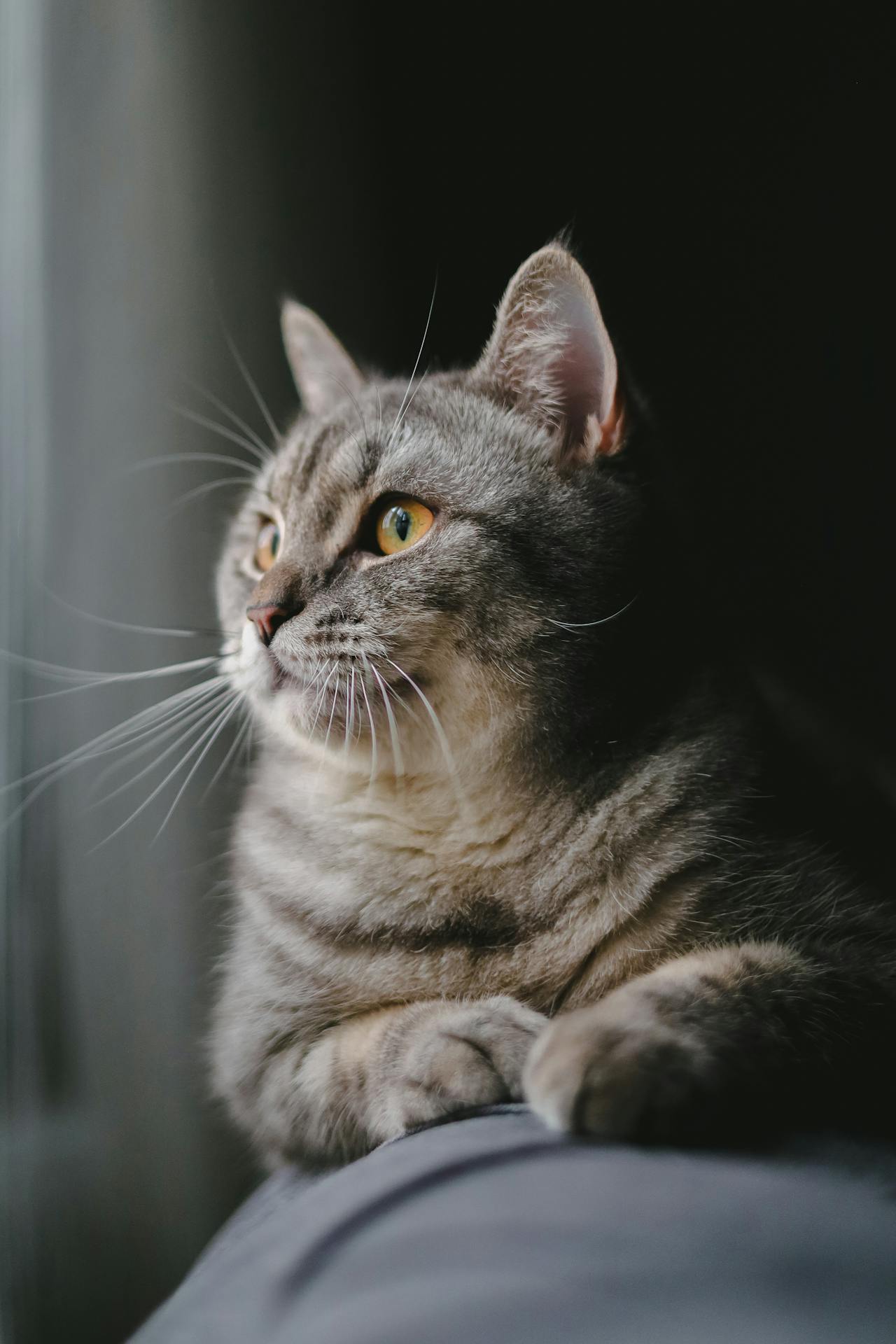
| Official Name | European Shorthair |
| Common Name | European Shorthair |
| Pet Height | 9 to 11 inches |
| Pet Weight | 12 to 15 pounds |
| Lifespan | 15 to 20 years |
| Good With | children, dogs, families, seniors |
| Temperament | affectionate, shy, sociable |
| Intelligence | high |
| Shedding Amount | normal |
| Playfulness | medium |
| Energy Level | active |
| Vocal Level | when necessary |
| Coat Length | short |
| Colors | black/ebony, blue/gray, chocolate/brown/sable, cinnamon, cream/beige/tan, fawn, lavender/silver, lilac, red/orange, white |
| Other Traits | easy to groom, easy to train, friendly toward humans, good for first-time pet owners, good lap cat, high prey drive, strong loyalty tendencies, tolerates being alone, tolerates being picked up |
This breed is one of the oldest in Europe and represents the classic European house cat. European Shorthairs typically have round faces, medium-sized bodies, and sleek, shiny coats.
These cats are friendly, adaptable, and excellent at catching mice. They're also quite easy to care for, which makes them perfect for first-time cat owners. While very popular in Europe, European Shorthairs are still somewhat rare in other parts of the world.
Appearance
European Shorthair cats are medium-sized with a sturdy, solid build, usually weighing between 12 and 15 pounds. They have rounded faces and bodies, and some are prone to developing a little belly pouch. Their eyes are a striking feature, with bright colors like blue, green, or amber. Some even have the unique trait of being odd-eyed, where one eye is blue, and the other is amber or green.
Their short, thick coat comes in a variety of colors, including solid shades, tabby patterns, and tortoiseshell. These cats have sleek, shiny fur, and they take pride in keeping themselves clean, often grooming themselves.
While European Shorthairs are often compared to British and American Shorthairs due to their similar looks, they stand out with their more muscular and stocky build.
Personality
European Shorthair cats are known for their friendly, intelligent, and adaptable nature. They are incredibly loyal and enjoy making their pet parents happy. They easily adjust to new surroundings and quickly make themselves at home wherever they go.
Despite their social nature, European Shorthairs often like to be in charge when around other pets. They might be a bit reserved with strangers and tend to keep a low profile in chaotic situations. These cats are playful and need both mental and physical activity to stay happy. With a lineage tracing back to barn cats across Europe, they have a natural talent for hunting. Give them an interactive toy, and you'll see their instinctive skills come to life as they stalk, pounce, and bunny kick with enthusiasm.
Because this breed comes from a diverse genetic background, each cat may have its own unique personality.
Living Needs
The European Shorthair thrives in a loving home where it can enjoy the company of its pet parents, play with toys, climb cat trees, and lead a peaceful, everyday life. These cats can be a bit shy around new people, so if your home has lots of visitors, it might make them feel uneasy.
According to Dr. Kurt Venator, Chief Veterinary Officer at Purina, "This cat is generally outgoing with regular family members but can be shy and timid around strangers, so ample room to hide is great for them."
European Shorthairs naturally love the outdoors and might try to sneak out or jump over fences if left unsupervised. To satisfy their curiosity, you can set up a perch near a window or even create a dedicated outdoor space, like a catio. Remember, they have a strong instinct to hunt and might go after small animals, so be cautious if you have pets like hamsters or gerbils.
These cats usually get along well with children and other pets, but they can sometimes be a bit jealous, leading to tension with other animals. While they can share a home with other cats and dogs, it depends on each pet's personality. The key is to make sure your European Shorthair feels loved and gets plenty of attention every day. In return, you'll be rewarded with affectionate headbutts and soothing purrs.
Care
The European Shorthair is a breeze to take care of, especially since they're known for being meticulous about their grooming. These cats are great at keeping themselves clean, so you won't need to bathe them often. A weekly brushing will keep their coat looking sleek, and don't forget to trim their nails and clean their ears regularly.
These cats are naturally active and love to be on the move. Try using puzzle toys that dispense treats to keep them entertained and fit. This not only encourages them to exercise but also keeps their minds sharp.
European Shorthairs are generally smart and easy to train. Positive reinforcement, like treats and praise, teaches them tasks like using the litter box.
When it comes to feeding, make sure to provide your European Shorthair with high-quality cat food recommended by your veterinarian to keep them healthy and happy.
Health
European Shorthair cats are known for their long lifespan, often living between 15 to 20 years. They're generally a healthy and sturdy breed, largely due to their natural development and diverse gene pool. This means they don't have specific health issues tied to the breed. However, paying close attention to your cat's needs and behavior is still important. Watch out for any signs of discomfort or pain, as these could be indicators of underlying health problems.
While European Shorthairs are usually healthy, they can be genetically predisposed to certain conditions like polycystic kidney disease, respiratory issues due to their short nose and flat face, and heart disease. It's crucial to choose a reputable breeder who screens for these health issues in kittens. Regular health check-ups are essential as some problems may not appear until later in your cat's life.
Exercise Requirements
One of the great advantages of adopting a cat instead of a dog is that you don't have to worry about taking your cat out for walks or scheduling regular exercise sessions. Cats, especially European Shorthairs, are naturally active and tend to entertain themselves by playing and running around. To keep your cat engaged, invest in a few toys, like mice or balls, that they can chase.
You can also join in on the fun by playing with your cat. Many cats enjoy a game with a "fishing pole" toy, which is a short rod with a feather or ribbon attached to the end. When you wave it around, your cat will love chasing after it. Not only does this provide some good exercise, but it also strengthens the bond between you and your cat as you share in the playtime together.
Training
European Shorthairs are smart cats and quick learners, making them easier to train than other breeds. While they might not pick up on commands like "fetch," "stay," or "sit" as a dog would, they can be taught useful behaviors. For instance, you can train them to use the litter box, stay calm during grooming, come when called, and get comfortable traveling in a carrier.
History
Experts believe the European Shorthair's roots go all the way back to ancient Rome. These sociable cats traveled with Roman conquerors and settled in European barns and shops. Although the breed standard we recognize today officially started in Sweden in the 20th century, the European Shorthair has remained a symbol of Scandinavian home life. Breeders have worked hard to keep the breed true to its historical origins, so today's European Shorthairs still resemble their Roman ancestors. While they are one of the most common cats in Europe, they are quite rare in other parts of the world.
Fun Facts
The term "European Shorthair" is often used to refer to common domestic cats across Europe, which can be confusing. In Finland, however, the European Shorthair is considered the country's national cat. This breed has also been known by a few different names, like the Celtic Shorthair and Bondkatt, which means "farm cat" in Swedish.
Get insurance plans with wide-ranging coverage options








